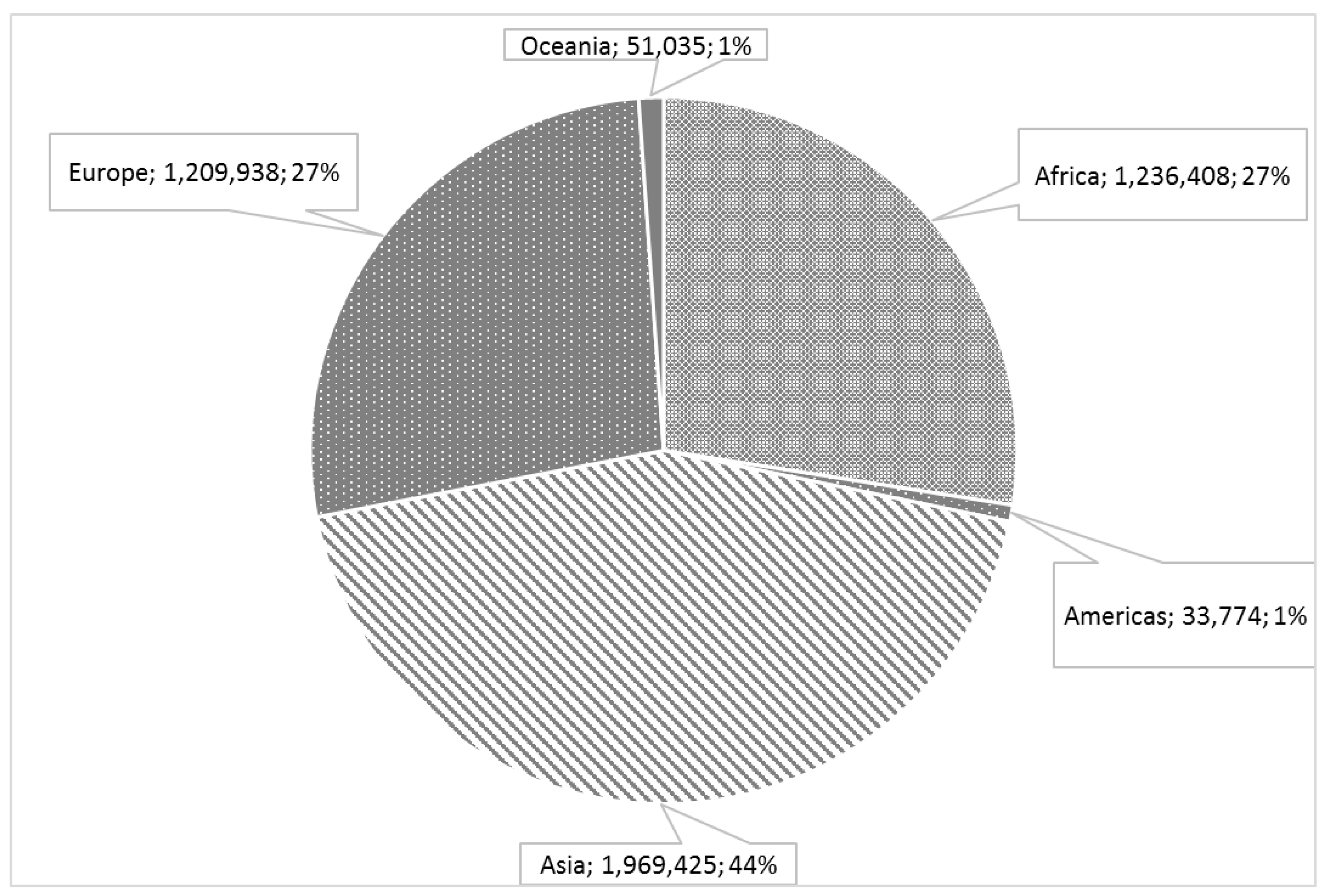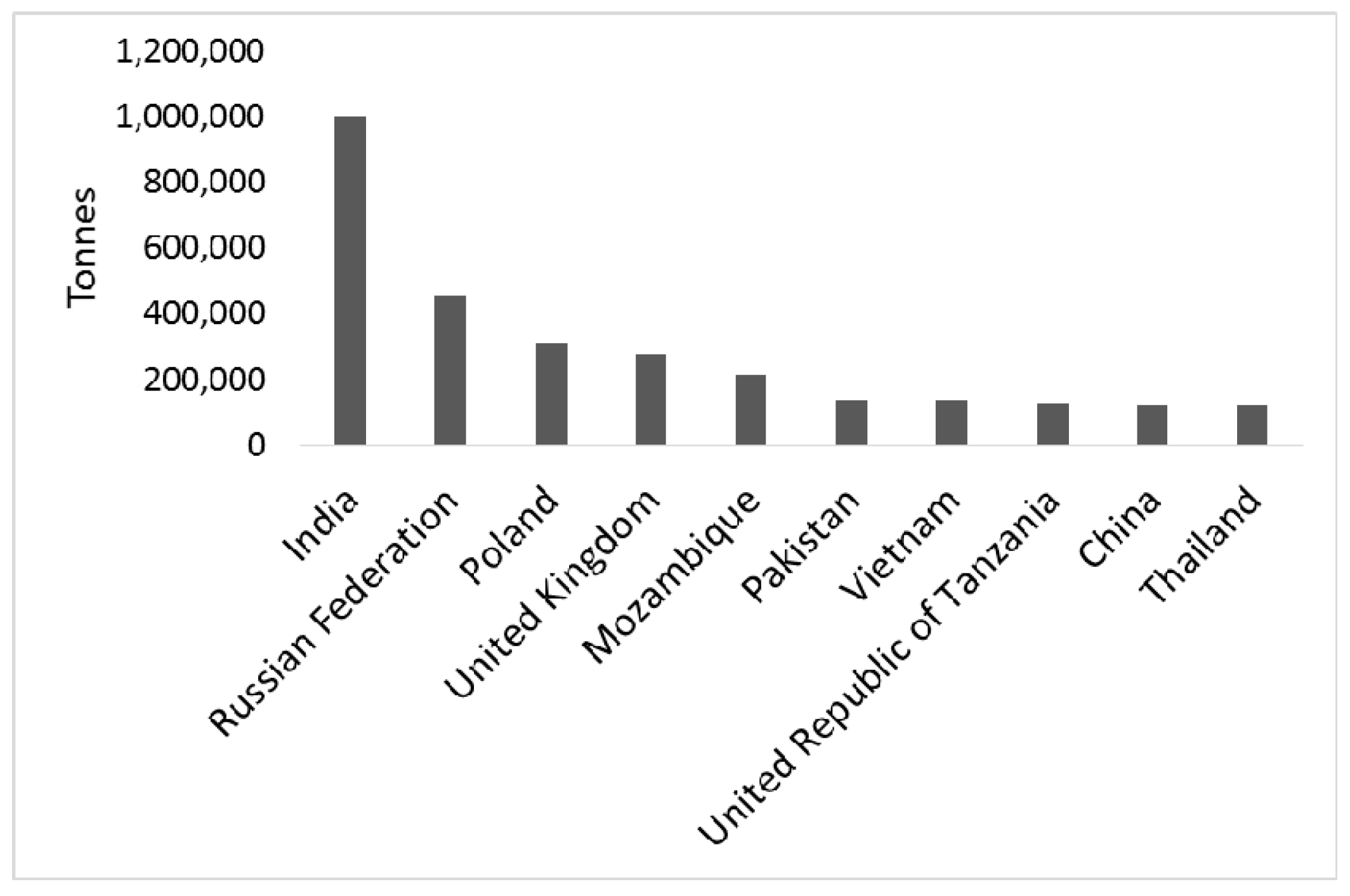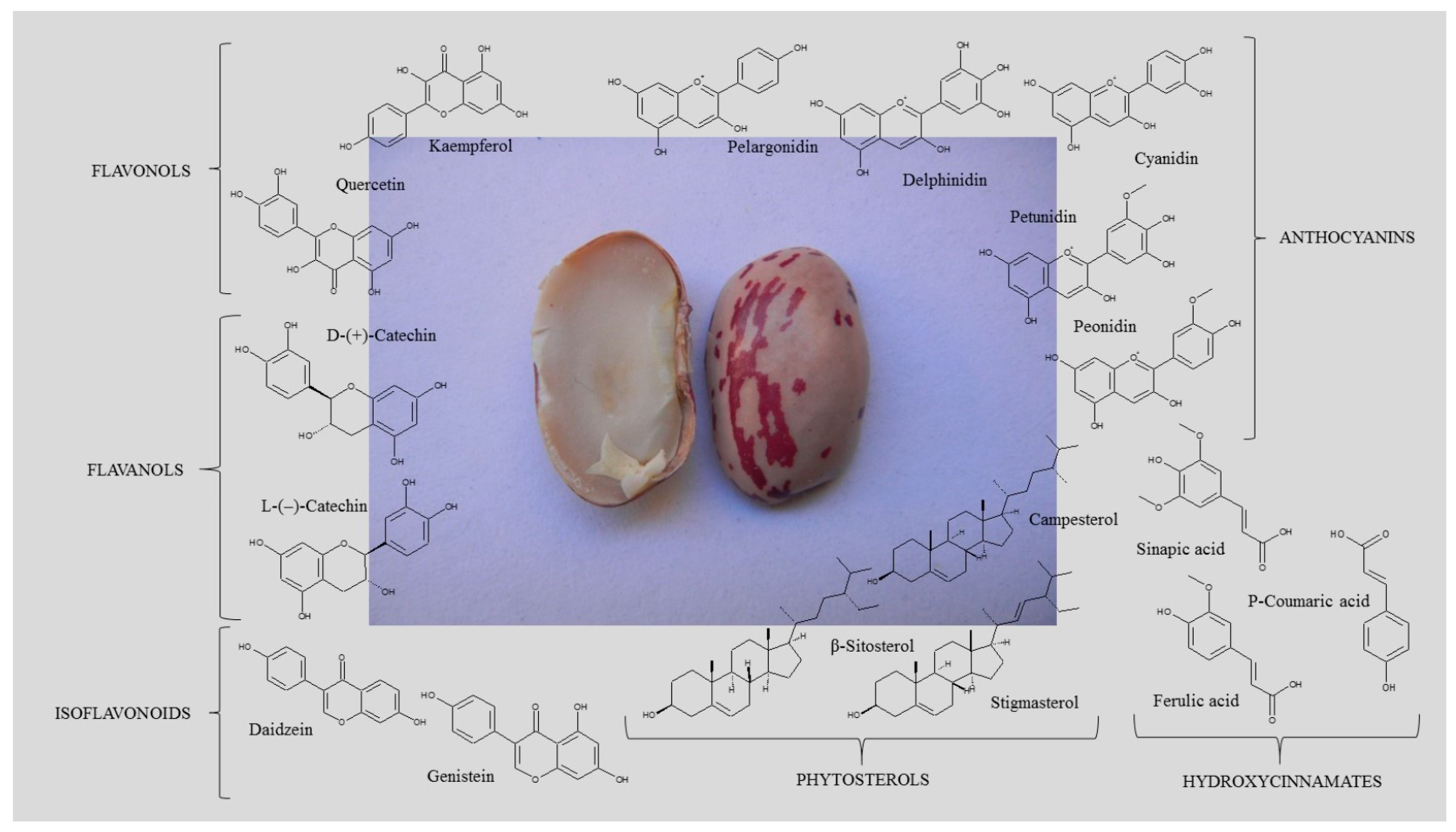Pulses, Healthy, and Sustainable Food Sources for Feeding the Planet
Acknowledgments
Conflicts of Interest
References
- Tharanathan, R.N.; Mahadevamma, S. Grain Legumes—A Boon to Human Nutrition. Trends Food Sci. Technol. 2003, 14, 507–518. [Google Scholar] [CrossRef]
- Singh, B.; Singh, J.P.; Shevkani, K.; Singh, N.; Kaur, A. Bioactive constituents in pulses and their health benefits. J. Food Sci. Technol. 2016. [Google Scholar] [CrossRef]
- Haileslassie, H.A.; Henry, C.J.; Tyler, R.T. Impact of household food processing strategies on antinutrient (phytate, tannin and polyphenol) contents of chickpeas (Cicer arietinum L.) and beans (Phaseolus vulgaris L.): A review. Int. J. Food Sci. Technol. 2016, 51, 1947–1957. [Google Scholar] [CrossRef]
- Rebello, C.J.; Greenway, F.L.; Finley, J.W. Whole grains and pulses: A comparison of the nutritional and health benefits. J. Agric. Food Chem. 2014, 62, 7029–7049. [Google Scholar] [CrossRef] [PubMed]



| Constituents | Value per 100 g |
|---|---|
| Water | 12.39 g |
| Energy | 335 kcal |
| Fiber (total) | 24.7 g |
| Ash | 3.31 g |
| Nutrients | Value per 100 g |
| Proteins | 23.03 g |
| Lipids (total) | 1.23 g |
| Carbohydrates | 60.05 g |
| Minerals | Value per 100 g |
| Calcium (Ca) | 127 mg |
| Iron (Fe) | 5 mg |
| Magnesium (Mg) | 156 mg |
| Phosphorous (P) | 372 mg |
| Potassium (K) | 1332 mg |
| Sodium (Na) | 6 mg |
| Zinc (Z) | 3.63 mg |
| Copper (Cu) | 0.794 mg |
| Manganese (Mn) | 0.920 mg |
| Selenium (Se) | 12.7 µg |
| Vitamins | Value per 100 g |
| Vitamin B1 (thiamin) | 0.747 mg |
| Vitamin B2 (riboflavin) | 0.213 mg |
| Vitamin B3 (niacin) | 1.455 mg |
| Vitamin B5 (pantothenic acid) | 0.748 mg |
| Vitamin B6 (piridoxine) | 0.309 mg |
| Folate (total) | 604 µg |
| Vitamin A | 2 IU |
| Lipids | Value per 100 g |
| Fatty acids (total saturated) | 0.316 g |
| 14:0 | 0.001 g |
| 16:0 | 0.296 g |
| 18:0 | 0.019 g |
| Fatty acids (total monounsaturated) | 0.106 g |
| 18:1 (undifferentiated) | 0.106 g |
| Fatty acids (total polyunsaturated) | 0.527 g |
| 18:2 (undifferentiated) | 0.287 g |
| 18:3 (undifferentiated) | 0.240 g |
| Amino acids | Value per 100 g |
| Tryptophan | 0.273 g |
| Threonine | 0.969 g |
| Isoleucine | 1.017 g |
| Leucine | 1.838 g |
| Lysine | 1.580 g |
| Methionine | 0.346 g |
| Cystine | 0.251 g |
| Phenylalanine | 1.245 g |
| Tyrosine | 0.648 g |
| Valine | 1.205 g |
| Arginine | 1.426 g |
| Histidine | 0.641 g |
| Alanine | 0.965 g |
| Aspartic acid | 2.785 g |
| Glutamic acid | 3.511 g |
| Glycine | 0.899 g |
| Proline | 0.976 g |
| Serine | 1.253 g |
| Phenolic acids | Compound | Mean Content (mg 100 g−1 FW) |
|---|---|---|
| Hydroxycinnamic acids | ||
 | Caffeic acid | 0.73 |
| Ferulic acid | 20.63 | |
| p-Coumaric acid | 9.47 | |
| Sinapic acid | 7.17 | |
| Flavonoids | Mean Content (mg 100 g−1 FW) | |
| Anthocyanins | Cyanidin | 1.63 |
 | Cyanidin 3,5-O-diglucoside | 1.98 |
| Cyanidin 3-O-glucoside | 3.99 | |
| Delphinidin 3-O-feruloyl-glucoside | 1.10 | |
| Delphinidin 3-O-glucoside | 14.50 | |
| Malvidin 3-O-glucoside | 0.60 | |
| Pelargonidin | 0.95 | |
| Pelargonidin 3,5-O-diglucoside | 1.54 | |
| Pelargonidin 3-O-glucoside | 12.60 | |
| Peonidin | 1.36 | |
| Petunidin 3-O-glucoside | 0.80 | |
| Flavonols | Kaempferol | 1.80 |
 | Kaempferol (after hydrolysis) | 0.88 |
| Kaempferol 3-O-acetyl-glucoside | 3.40 | |
| Kaempferol 3-O-glucoside | 6.60 | |
| Quercetin (after hydrolysis) | 0.98 | |
| Isoflavonoids | ||
 | Daidzein | 0.80 |
| Genistein | 0.60 | |
| Proanthocyanidins | Mean Content (mg 100 g−1 FW) | |
 | ||
| Flavanol monomers | 2.90 | |
| Flavanol dimers | 5.20 | |
| Total polyphenols (Folin assay) | 1390.75 mg 100 g−1 FW | |
© 2017 by the authors. Licensee MDPI, Basel, Switzerland. This article is an open access article distributed under the terms and conditions of the Creative Commons Attribution (CC BY) license ( http://creativecommons.org/licenses/by/4.0/).
Share and Cite
Iriti, M.; Varoni, E.M. Pulses, Healthy, and Sustainable Food Sources for Feeding the Planet. Int. J. Mol. Sci. 2017, 18, 255. https://doi.org/10.3390/ijms18020255
Iriti M, Varoni EM. Pulses, Healthy, and Sustainable Food Sources for Feeding the Planet. International Journal of Molecular Sciences. 2017; 18(2):255. https://doi.org/10.3390/ijms18020255
Chicago/Turabian StyleIriti, Marcello, and Elena Maria Varoni. 2017. "Pulses, Healthy, and Sustainable Food Sources for Feeding the Planet" International Journal of Molecular Sciences 18, no. 2: 255. https://doi.org/10.3390/ijms18020255







